Mercedes-Benz has long been a symbol of prestige, engineering excellence, and refined driving experiences. Synonymous with German automotive craftsmanship, the brand has built its reputation on producing vehicles that blend performance, luxury, and innovation.
Among its most popular offerings in recent decades are its SUVs, ranging from compact crossovers to full-size, three-row luxury haulers. While the badge alone may inspire confidence, not every Mercedes SUV lives up to the expectations that come with owning a vehicle from such an esteemed marque, especially when measured by long-term value and cost of ownership.
The true story of Mercedes SUVs is a tale of two extremes: on one side, you have models that retain their value incredibly well and reward owners with longevity and prestige; on the other, there are those that, despite their initial appeal, become financial burdens plagued with reliability issues and staggering repair bills.
This dichotomy is not entirely surprising when you consider the wide range of technologies, drivetrains, and manufacturing strategies employed across the Mercedes SUV lineup over the years. Some models are overengineered to a fault, packing in cutting-edge systems that, while impressive, often fail prematurely and cost a small fortune to fix.
Others, built on proven platforms with durable components, manage to age gracefully and provide their owners with a more balanced blend of luxury and reliability.
Adding to the complexity is the luxury vehicle depreciation curve—Mercedes SUVs can drop in value rapidly, but some models defy this trend thanks to timeless design, low production volumes, or cult-like followings.
This article breaks down the landscape into two clear camps: the five Mercedes SUVs that consistently hold value and prove to be smart long-term choices, and the five that tend to drain wallets, either through mechanical pitfalls, poor resale value, or high maintenance costs.
Whether you’re a seasoned Mercedes owner looking to make your next move or a first-time luxury SUV buyer trying to separate flash from substance, understanding these distinctions is crucial. A Mercedes SUV can either be a lasting source of pride or an unending source of headaches, depending entirely on the model you choose.
In compiling this analysis, we focus not just on initial appeal but on how these vehicles behave after 60,000, 100,000, or even 150,000 miles—when warranties expire and the reality of ownership sets in. We consider factors like long-term reliability, cost of repairs, availability of parts, depreciation rates, and real-world owner feedback.
The goal isn’t to undermine the Mercedes brand—far from it—but to equip you with a realistic picture of which models deserve your trust and investment. Some Mercedes SUVs deliver everything they promise and more; others falter under the weight of complexity and overambition.
So, whether you’re eyeing a rugged G-Wagen with near-mythic status or considering a budget-friendly used compact like the GLA, this breakdown will give you a clear-eyed view of what to expect, not just in the showroom, but five years down the road.
Also Read: 5 Cars with Bulletproof Electronic Systems and 5 That Short Out Easily
5 Mercedes SUVs That Hold Value

1. Mercedes-Benz G-Class (G-Wagen)
Few vehicles in the world can match the iconic status and value retention of the Mercedes-Benz G-Class, affectionately known as the G-Wagen. Originally designed as a rugged military vehicle, it has since evolved into a luxury powerhouse without compromising its utilitarian roots.
The G-Class stands out in the luxury SUV segment not just for its imposing, boxy design but for its exceptional build quality, formidable off-road prowess, and a level of exclusivity that continues to drive demand.
Despite being one of the most expensive SUVs on the market, used G-Wagens consistently command high resale prices, often defying typical depreciation curves. Certain older models, especially well-maintained G500 and G550 units, have appreciated thanks to limited supply and robust mechanical reliability.
Under the hood, the G-Wagen offers a range of bulletproof engines—from the naturally aspirated V8s of earlier models to the ferocious twin-turbo V8s in AMG variants. Regardless of the trim, the G-Class is built to last. Owners often report mileage well beyond 200,000 with routine maintenance, a rarity in the high-end luxury vehicle space.
Mercedes’ commitment to overengineering the G-Class, including its ladder-frame chassis, three locking differentials, and heavy-duty suspension, ensures that these vehicles are not just fashion statements but functional tools. Whether navigating rough terrain or cruising through Beverly Hills, the G-Wagen performs with stoic composure.
Moreover, the G-Class maintains strong desirability due to its cultural cachet. It’s as popular among Hollywood elites as it is among military enthusiasts and off-road purists.
This cross-market appeal, combined with relatively low production numbers and a reputation for long-term dependability, makes it one of the smartest long-term investments in the luxury SUV space.
While maintenance costs can be steep, and fuel economy is nothing to brag about, owners are more than compensated by the G-Wagen’s ability to resist depreciation and hold its value better than almost any other luxury vehicle on the road.

2. Mercedes-Benz GLK-Class (2009–2015)
The Mercedes-Benz GLK-Class was a compact luxury SUV that may not have garnered as much attention as its larger or sportier siblings, but it has proven to be one of the most reliable and value-retaining vehicles in the brand’s history.
Built on the same platform as the robust C-Class, the GLK came equipped with mechanical simplicity compared to newer models, which contributes significantly to its long-term reliability.
The GLK350, in particular, with its naturally aspirated 3.5L V6 engine, is widely praised for its mechanical toughness, with few serious issues reported even after reaching high mileage.
Aesthetically, the GLK’s boxy, utilitarian design has aged well, giving it a distinctive and timeless character that continues to appeal to buyers in the used market. Unlike many compact luxury crossovers that prioritized form over function, the GLK was engineered with practicality and durability in mind.
It features a high seating position, an intuitive interior layout, and cargo space that rivals some mid-size SUVs. Its high build quality and use of durable materials mean fewer complaints about interior wear and tear, a common concern in entry-level luxury vehicles.
Combine this with lower-than-average repair costs and dependable performance, and it’s easy to see why the GLK retains value far better than expected.
While it doesn’t boast the flashy features or tech of newer Mercedes-Benz offerings, that simplicity is part of its appeal. Fewer overly complicated systems mean fewer things that can go wrong—an underrated trait when evaluating long-term ownership value.
The GLK represents a sweet spot in the Mercedes SUV lineup: modern enough to feel current, but simple enough to last. It’s no surprise that these models are still in high demand in the pre-owned market, especially among buyers looking for a premium badge without the headaches of unpredictable maintenance costs.
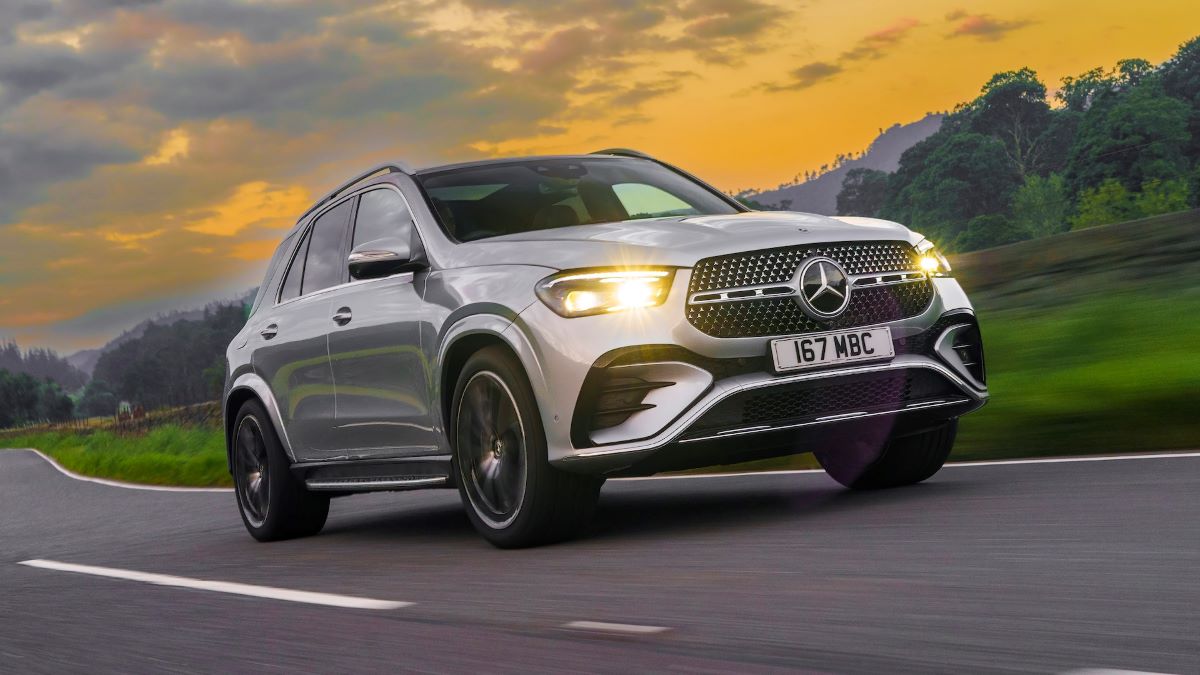
3. Mercedes-Benz GLE-Class (2016–Present)
The GLE-Class, launched in 2016 as the spiritual successor to the ML-Class, quickly proved itself to be a major improvement in both quality and design.
As a mid-size SUV aimed at luxury families and daily commuters alike, the GLE manages to blend comfort, performance, and reliability into a refined package that holds its value far better than its predecessor.
A big reason for its strong market performance lies in the powertrains, especially the GLE 350 and the mild-hybrid inline-6 engines introduced in later models. These engines are far more efficient and reliable than the earlier ML-Class V6s, and they pair well with Mercedes’ updated 9-speed automatic transmission.
Where the GLE truly excels is in balancing high-tech features with a user-friendly interface. Mercedes clearly learned from the overly complex systems of the past and gave the GLE a cleaner, more functional cockpit, with MBUX infotainment systems that, while advanced, have proven to be relatively dependable over time.
In terms of interior quality, the GLE doesn’t cut corners—soft-touch materials, refined wood, and aluminum trim, and supportive seating make the GLE feel every bit like a true luxury vehicle.
But it’s not just about initial impressions. These materials hold up well over time, helping the vehicle maintain that upscale feel even after years of use. From a resale standpoint, the GLE benefits from strong brand recognition and a broad appeal.
Whether it’s a base model or an AMG-lite trim like the GLE 43 or GLE 53, these vehicles continue to command good prices on the used market.
Additionally, Mercedes’ improvements in build quality, especially after 2018, have drastically reduced the long-term repair concerns that plagued previous models. For anyone considering a long-term purchase, the GLE-Class stands out as a Mercedes SUV that offers solid value retention without compromising on luxury or performance.
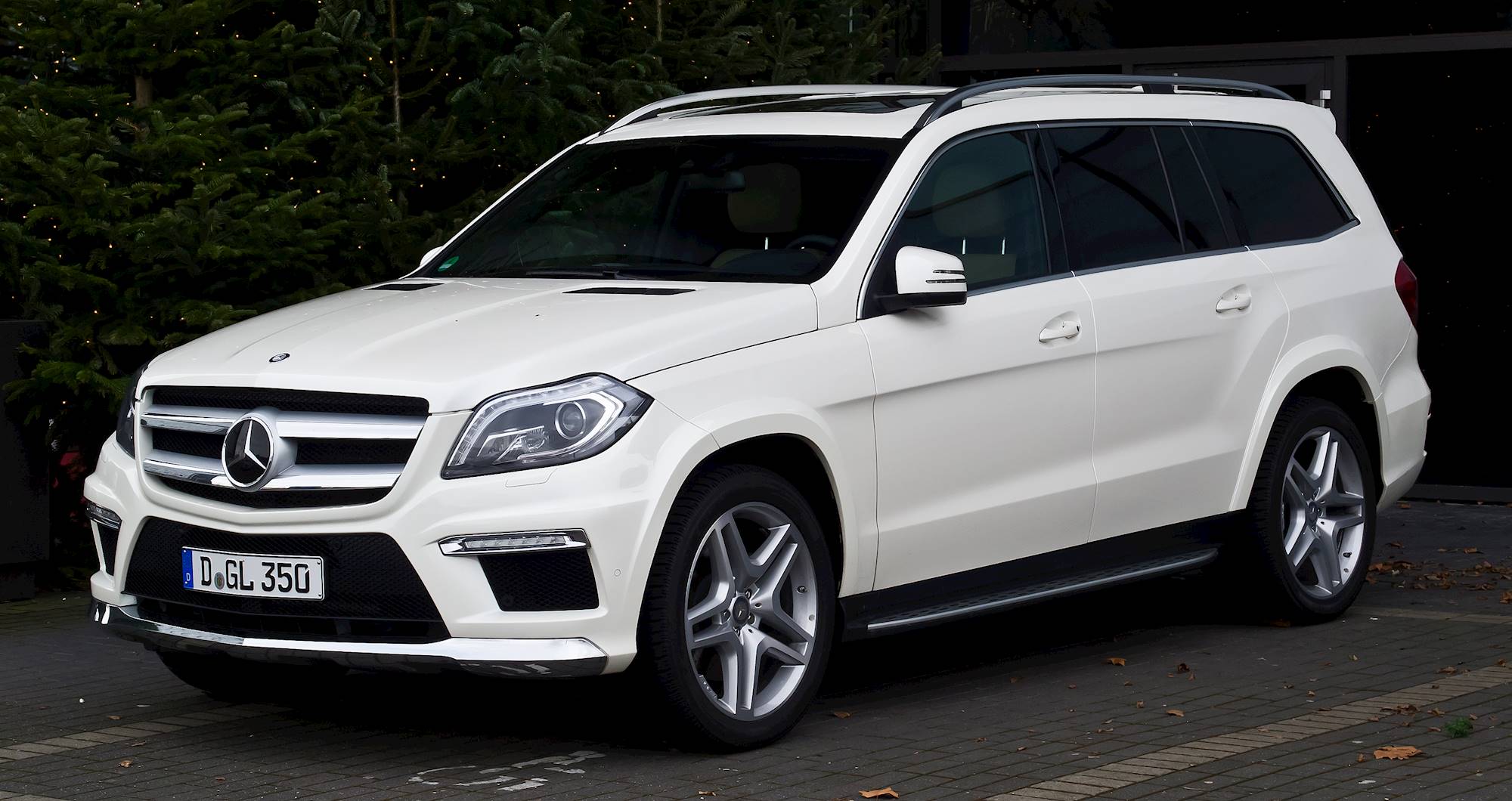
4. Mercedes-Benz GL-Class (2013–2016)
The second-generation Mercedes-Benz GL-Class (X166) stands as a turning point for the brand’s full-size SUVs. These models, particularly the GL450 and GL550, represent a major leap forward from the problematic first generation.
While earlier GLs were known for costly air suspension and drivetrain issues, the 2013–2016 versions are notably more refined and mechanically reliable.
The GL450’s twin-turbo V8 engine, for example, offers a great blend of power and longevity when maintained, making it a favorite among large SUV buyers who want Mercedes-level luxury without the constant dread of repair bills.
Beyond its mechanical improvements, the GL-Class also holds value due to its spacious three-row layout, which makes it a practical choice for families who don’t want to sacrifice luxury. The interior quality is high, with leather, wood, and brushed metal surfaces creating a premium environment.
Technological upgrades during this generation included more advanced driver assistance systems, improved infotainment, and refined air suspension tuning—all of which made the GL more competitive against rivals like the BMW X7 and Audi Q7.
Because of its size and utility, the GL-Class has a wide appeal on the used market, especially among buyers looking for a luxury hauler with legitimate long-distance comfort.
While any full-size SUV will have above-average maintenance costs, the 2013–2016 GL-Class offsets this with above-average reliability and excellent road presence. Many examples are still going strong with over 150,000 miles, and the cost of ownership, while not cheap, is more predictable than earlier iterations.
For families who need space and sophistication, or buyers who want full-size luxury without entering the six-figure territory of new models, the second-gen GL-Class represents a well-rounded and value-holding SUV option.
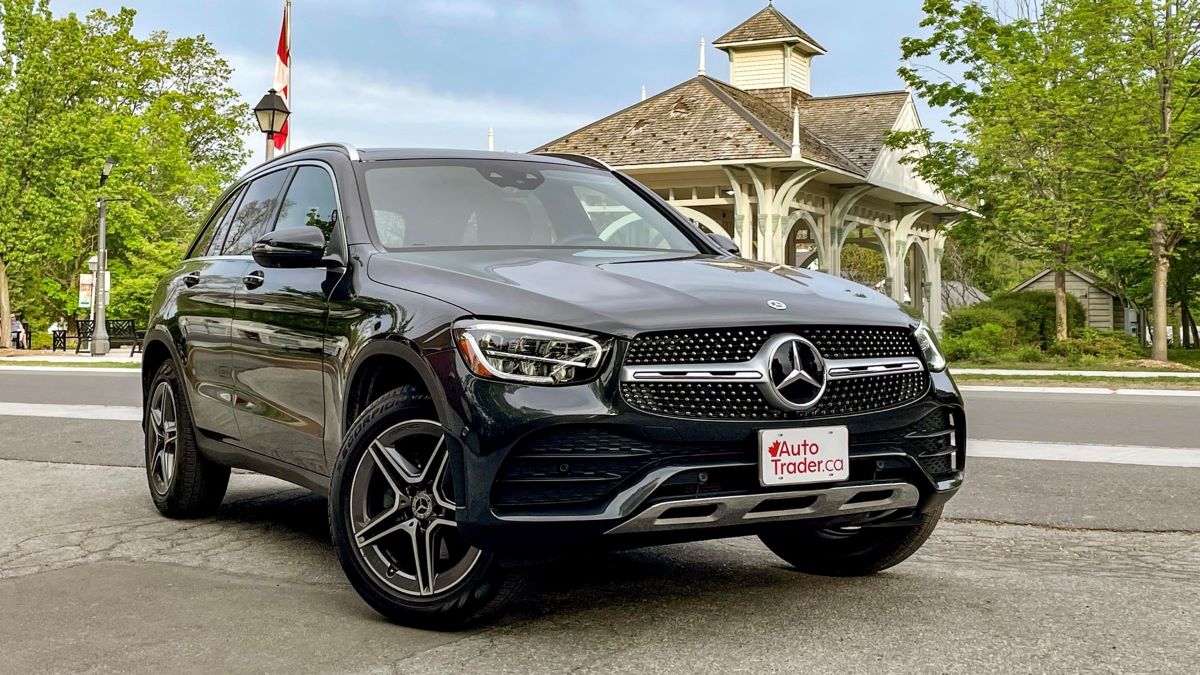
5. Mercedes-Benz GLC-Class (2016–Present)
Introduced as the successor to the GLK, the Mercedes-Benz GLC-Class quickly established itself as one of the most successful compact luxury SUVs in the world. It strikes an impressive balance between performance, efficiency, and luxury in a compact footprint, and has become a mainstay in the Mercedes-Benz lineup.
The GLC 300, which makes up the bulk of sales, is powered by a turbocharged four-cylinder engine that has proven itself to be relatively reliable when properly maintained. Coupled with a well-tuned 9-speed transmission, the GLC offers smooth acceleration, respectable fuel economy, and a quiet cabin—all traits that enhance long-term value.
From a design perspective, the GLC is modern without being trendy, which has helped it age well both visually and technologically. Inside, it offers one of the best interiors in its class, with high-quality materials, a driver-focused layout, and a wealth of convenience features.
The infotainment system, while complex in its early years, became far more intuitive with the introduction of MBUX, and the updates have improved both user satisfaction and long-term dependability.
Thanks to its wide availability in both SUV and coupe body styles, as well as hybrid and AMG variants, the GLC appeals to a broad customer base, which helps sustain its demand in the used market.
In terms of resale value, the GLC holds its own remarkably well for a compact luxury SUV, especially when compared to rivals like the Audi Q5 and BMW X3. Its continued popularity ensures strong demand, while its relatively low rate of major mechanical failure means fewer costly surprises for owners down the line.
Whether you’re looking for a daily driver, a small family SUV, or a premium vehicle with a modest footprint, the GLC-Class remains a wise investment that offers excellent long-term value and dependability.
5 Mercedes SUVs That Drain Wallets
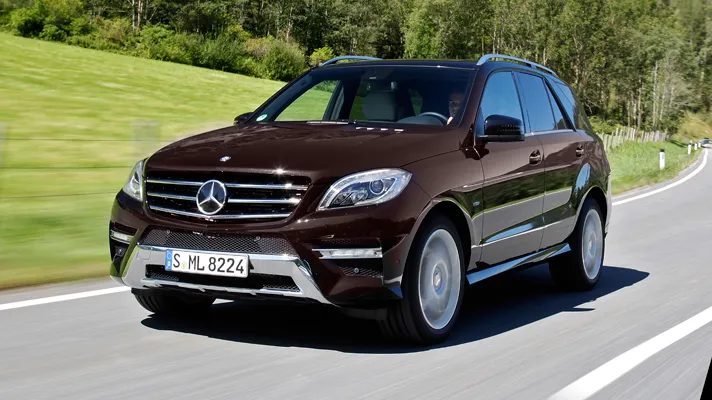
1. Mercedes-Benz ML-Class (1998–2015)
The Mercedes-Benz ML-Class, especially across its earlier generations, is often cited as a prime example of a luxury SUV that doesn’t live up to the expectations set by its badge, particularly when it comes to long-term ownership costs.
Introduced in the late 1990s, the ML-Class was Mercedes’ first foray into the burgeoning luxury SUV market, and while it did pave the way for future success, the model itself was riddled with serious issues that led to sky-high maintenance bills and an unpleasant ownership experience for many.
One of the biggest problems lies in the inconsistency of its build quality, especially in the first and second generations. ML320 and ML430 models were assembled in Alabama with numerous quality control lapses that led to failing electronics, rattling interiors, rust issues, and underwhelming engine reliability. For a luxury SUV, this was far from acceptable.
The later iterations, such as the ML350 and ML550, did see improvements in performance and design, but many of the underlying issues remained. The balance shaft failure in certain V6 models is a notorious example—this defect alone can result in repair bills exceeding $4,000 to $6,000, making it an unwelcome surprise for any owner out of warranty.
Add to this an air suspension system that frequently fails after 80,000 miles, and you’re looking at another major cost that most buyers simply aren’t prepared for. Then there are the high repair costs associated with outdated infotainment systems, power liftgates, sunroofs, and more—all of which are prone to malfunction.
The ML-Class depreciates rapidly, meaning even when purchased at a “deal,” these SUVs can quickly turn into financial black holes once out of warranty.
Despite its premium appearance and Mercedes cachet, the ML-Class often leaves owners disillusioned, especially those who expect the vehicle to last without constant trips to the repair shop.
The complex engineering, paired with average-to-below-average reliability ratings, makes this model a cautionary tale. For those tempted by its spacious interior and robust feature set, it’s critical to factor in the long-term costs. Without an extended warranty or detailed maintenance history, owning an ML-Class is often more stress than it’s worth.

2. Mercedes-Benz GL-Class (2006–2012)
At first glance, the first-generation Mercedes-Benz GL-Class (X164) appears to be the ideal luxury family SUV—large, comfortable, and brimming with prestige. However, beneath its stately exterior lies a minefield of mechanical and electronic issues that have made it infamous among Mercedes technicians and seasoned owners alike.
Released as Mercedes’ answer to the full-size luxury SUV market, the GL-Class offered three rows of seating, high-end materials, and a smooth ride, but it also carried with it a plethora of design flaws and reliability concerns that translated into exorbitant repair bills.
One of the biggest culprits was the air suspension system. Though designed to offer a plush ride, it was notorious for premature failure. Replacing or repairing the AIRMATIC system could cost between $2,000 and $5,000, and repeat failures were common even after repairs.
Further compounding the GL’s issues were its overly complicated electronics, including power tailgates, infotainment units, and COMAND systems that often malfunctioned well before the 100,000-mile mark.
The GL450 and GL550 variants, though powerful, came with high-maintenance V8 engines that suffered from timing chain issues, excessive oil consumption, and random misfires.
Many owners also reported frequent CEL (Check Engine Light) warnings that often traced back to costly and obscure sensor failures. Even the diesel-powered GL350 BlueTEC, which promised efficiency, was plagued with emissions system problems, including DEF heater failures, which are both expensive to fix and critical for vehicle operation.
Perhaps the most damaging factor to the GL-Class’s long-term value is its staggering depreciation. These SUVs lose their value faster than nearly any other vehicle in the Mercedes lineup, largely due to their high cost of upkeep.
Buyers looking for affordable luxury on the used market may be enticed by the seemingly low price of a used GL, but the reality is that even minor repairs can add up quickly, and major component failures can outstrip the value of the SUV entirely.
Unless one finds a meticulously maintained model with verifiable service records and is prepared to handle ongoing expenses, the GL-Class should be approached with caution.
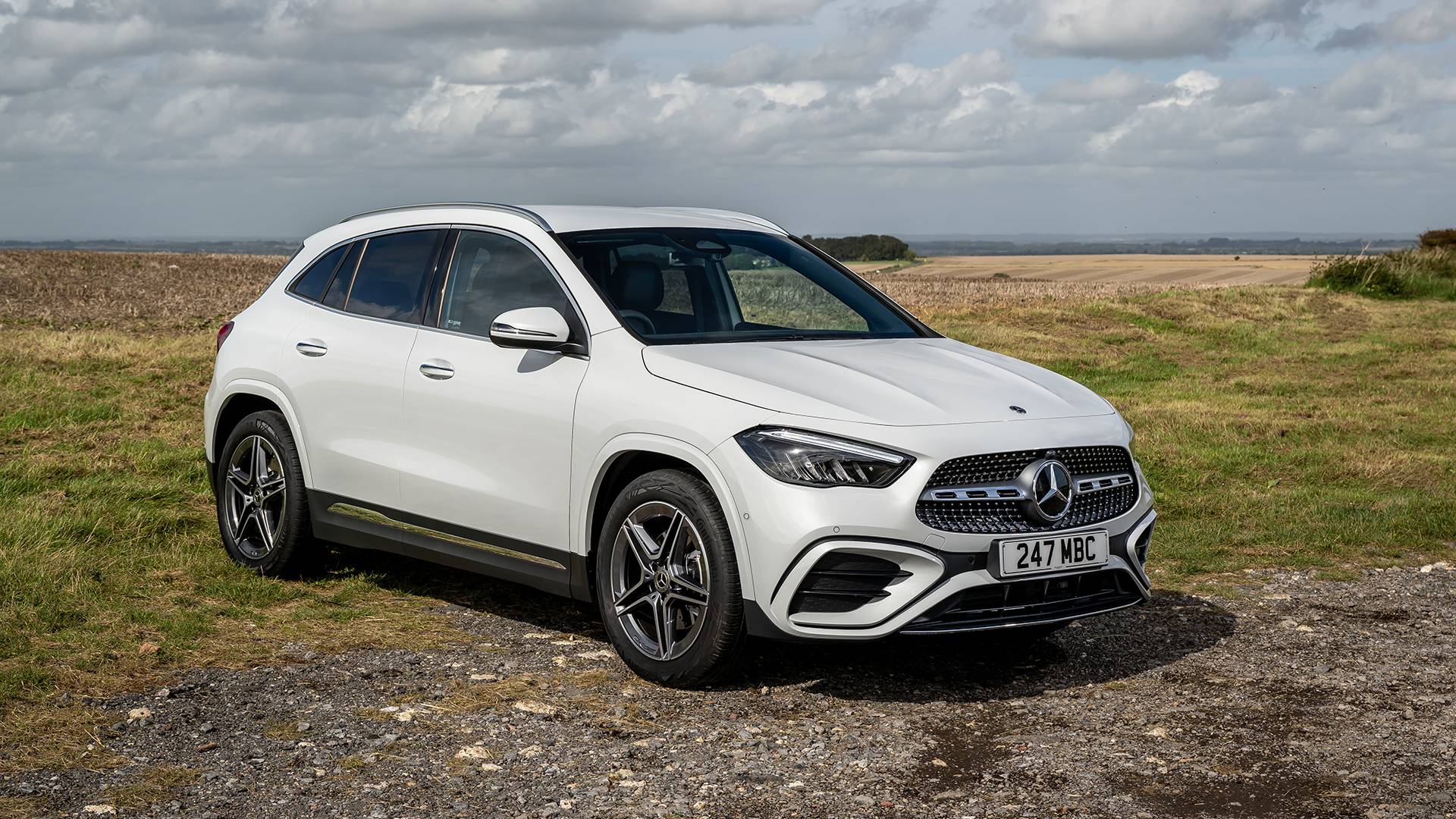
3. Mercedes-Benz GLA-Class (2015–2019)
The Mercedes-Benz GLA-Class was marketed as the brand’s entry-level compact luxury crossover, aimed at attracting a younger demographic to the three-pointed star.
While it initially saw strong sales due to its sporty design, small footprint, and relatively accessible price point, the GLA has not aged well in terms of value retention and mechanical durability.
Many owners who purchased the GLA with hopes of enjoying a low-maintenance luxury experience have found themselves frustrated by recurring issues that range from engine reliability to interior build quality.
The 2.0-liter turbocharged four-cylinder engine, found in the GLA250, is prone to several problems, including oil leaks, carbon buildup on the intake valves, and turbocharger failures, especially when the engine is not diligently maintained.
Mechanically, the GLA’s ride is rougher than most of its competitors due to its A-Class-derived platform and stiff suspension setup, which is more suited for European roads than North American city streets. That stiffness, combined with road noise and a relatively cramped interior, detracts from the luxury experience Mercedes is known for.
Electronics are another sore spot. Many owners have reported glitches in the COMAND infotainment system, finicky sensors, and rapidly wearing interior materials, particularly on high-touch surfaces. These quality concerns contribute to the vehicle’s faster-than-average depreciation curve, making it a less-than-ideal choice for buyers hoping to retain long-term value.
While the GLA may look appealing from a distance, especially to buyers wanting a “budget Benz,” the reality is that its cost of ownership is disproportionately high for a vehicle in its segment.
Repairs can quickly surpass what you’d expect for a compact SUV, and with limited interior practicality and minimal performance upside compared to rivals, it simply doesn’t deliver on its premium promise. For many, the GLA turns out to be a regrettable purchase that eats away at budgets over time.
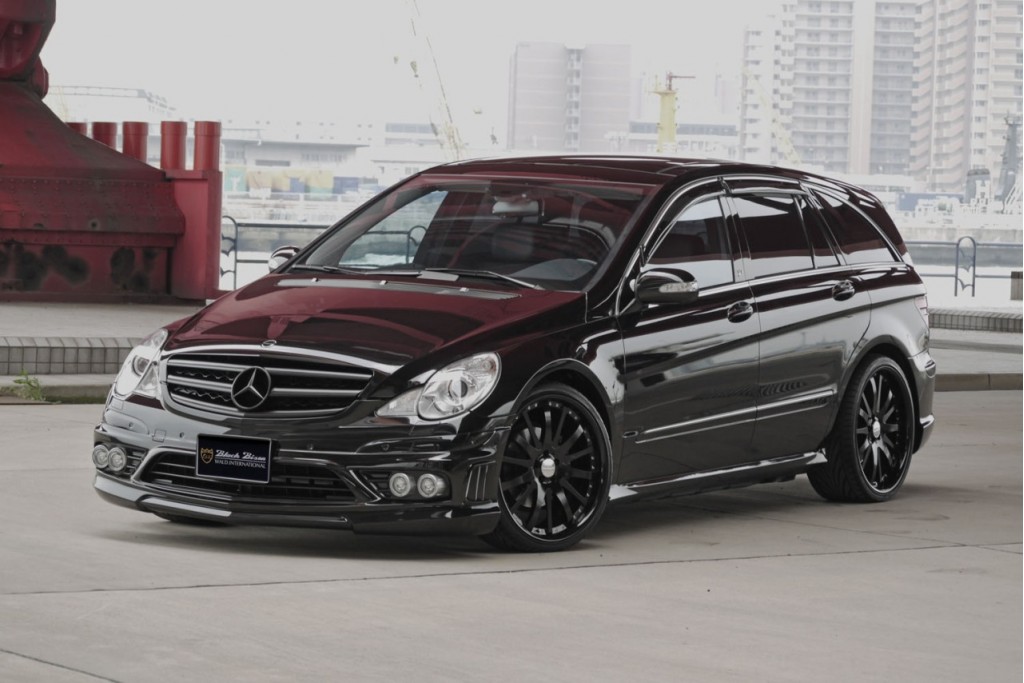
4. Mercedes-Benz R-Class (2006–2012)
Arguably one of the most misunderstood and commercially unsuccessful vehicles Mercedes has ever built, the R-Class was an attempt to blend SUV, minivan, and wagon characteristics into a single premium vehicle. Unfortunately, that blend produced a model that was awkwardly styled, poorly marketed, and rife with reliability concerns.
From a design standpoint, the R-Class never quite fit in—it was too bulky to be called sleek, too sluggish to be sporty, and too premium to compete with practical minivans.
Its identity crisis led to poor sales and, ultimately, the model’s discontinuation in 2012. However, those who did buy into the R-Class brand often found themselves tethered to one of the most maintenance-heavy vehicles Mercedes ever produced.
The biggest problems with the R-Class stem from its drivetrain and electronics. The 4MATIC all-wheel-drive system, while capable, was known for differential and transfer case issues that could cost thousands to fix.
Engine options, including the 3.5L V6 and the 5.5L V8, were prone to timing chain and balance shaft problems—expensive and labor-intensive repairs that often rear their head just after warranty expiration.
Diesel variants added yet another layer of complexity, with emissions system failures, DEF problems, and DPF clogging being routine issues. Meanwhile, the AIRMATIC suspension system, a staple on higher trims, often failed prematurely, compounding the vehicle’s unreliability.
Interior quality was inconsistent, with reports of seat motors, HVAC controls, and rear entertainment systems failing at surprisingly low mileages. Combined with a vehicle that was difficult to park, lacked dynamic performance, and suffered from horrendous resale value, the R-Class became a financial burden for many owners.
On the used market, R-Class vehicles can be found at shockingly low prices, but those prices are deceptive. The cost of keeping one roadworthy far exceeds what most buyers are willing to pay, making it one of the worst Mercedes SUVs in terms of long-term value retention.
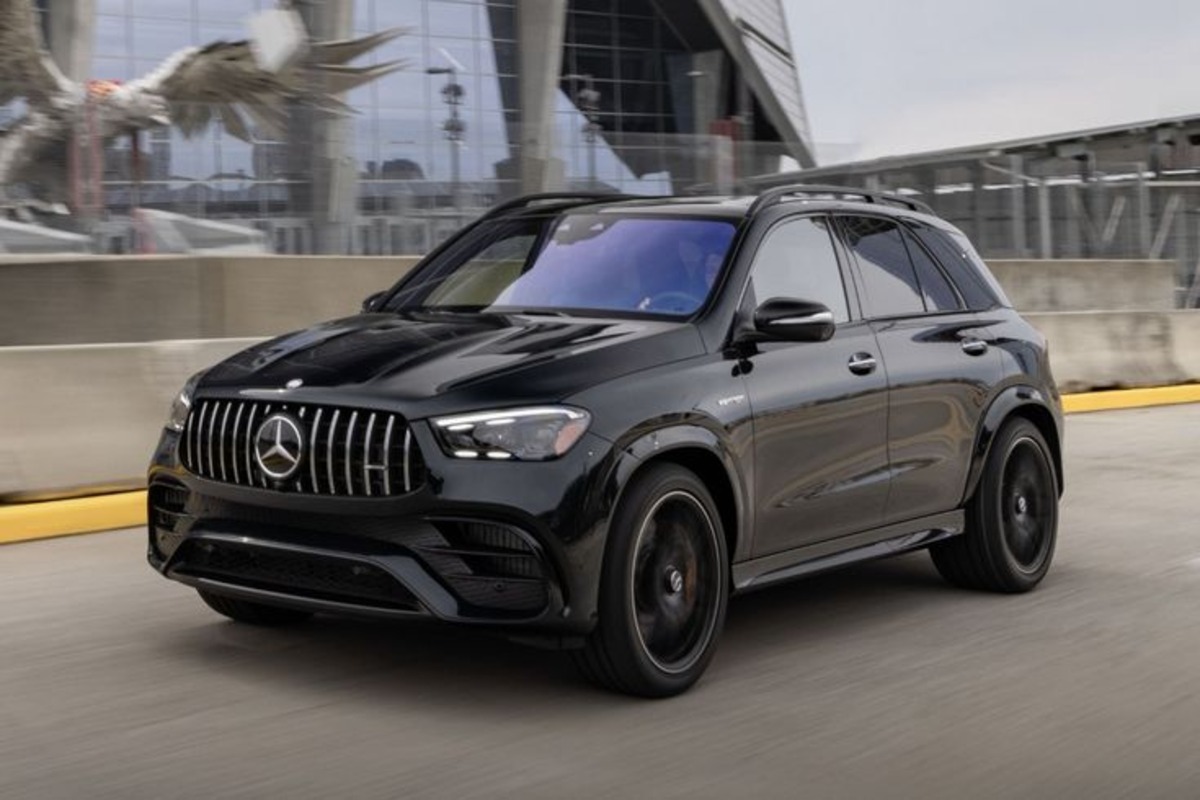
5. Mercedes-Benz GLE 63 AMG (2016–2020)
The Mercedes-Benz GLE 63 AMG is the epitome of performance excess—massive horsepower, aggressive styling, and luxury appointments that rival flagship sedans.
However, that power and prestige come with a steep price, both upfront and down the road. Beneath the surface of this beastly SUV lies a high-strung 5.5-liter twin-turbocharged V8 engine that is both a mechanical marvel and a maintenance nightmare.
While the performance is undeniably exhilarating, with 0–60 mph times under 4.5 seconds, the price of admission is only the beginning of the financial toll. The engine is prone to oil leaks, cooling system issues, and carbon buildup—problems that, while fixable, are incredibly costly due to the labor-intensive nature of the engine bay.
The GLE 63 AMG is also loaded with high-tech features that don’t always age gracefully. From complex air suspension systems to advanced driver assistance modules, the more miles this SUV accrues, the more likely it is that something expensive will break.
When out of warranty, owners are often faced with repair bills that can reach five figures, especially if multiple components fail at once. And let’s not forget about the cost of consumables—this is a vehicle that chews through tires, brakes, and oil at a pace far faster than your average SUV, with replacement parts priced at premium AMG rates.
Depreciation hits hard, too. Despite its performance pedigree, the GLE 63 AMG loses value rapidly after the first few years, mainly because few buyers want to assume the risk of owning such a complex, aging vehicle. Even a well-maintained, low-mileage example is viewed cautiously in the used market due to its reputation for high running costs.
Unless you have deep pockets and a passion for high-performance SUVs, the GLE 63 AMG is best admired from afar. For the average buyer, it is a wallet-draining machine that demands more than it gives back in long-term ownership satisfaction.
Also Read: 5 Cars That Keep Their Cool In Summer And 5 That Turn Into Ovens
When it comes to choosing the right Mercedes-Benz SUV, the stakes are undeniably high. Luxury, after all, comes at a price—and that price doesn’t end at the dealership. Beyond the polished interiors and high-performance engines lies a long-term reality that every buyer must consider: value retention and total cost of ownership.
As we’ve seen, the Mercedes SUV lineup includes both celebrated icons that defy depreciation and deliver a solid return on investment, and lesser-known models that, despite their premium trappings, struggle with reliability, costly repairs, and rapid value decline.
On the more dependable side, SUVs like the G-Class, GLK, and GLC showcase the very best of what Mercedes can offer. These vehicles were thoughtfully engineered with longevity in mind, blending refined driving experiences with mechanical integrity.
The G-Class, in particular, has earned a near-legendary status, not only for its durability and off-road prowess but also for its almost mythical ability to hold resale value over time.
The GLK, while more subdued, stands as a quiet triumph, proving that simplicity, practicality, and mechanical resilience can sometimes outweigh flashy innovation.
And the GLE and GL-Class (second generation) demonstrate how Mercedes has evolved, learning from earlier missteps to create SUVs that balance luxury, performance, and practicality in a more sustainable package.
However, for every model that gets it right, others reveal the hidden costs of owning a high-end vehicle. The ML-Class and first-generation GL-Class are cautionary tales—ambitious in scope, yet plagued by engineering faults that drain owners’ finances and patience alike.
The GLA-Class, while designed to be an affordable entry into the Mercedes ecosystem, sacrifices too much in build quality and long-term dependability.
Perhaps most disappointing is the GLE 63 AMG, a vehicle that dazzles with horsepower and style but demands a king’s ransom in maintenance and repairs, particularly once it’s out of warranty.
And then there’s the ill-fated R-Class, a strange experiment in luxury utility that never quite found its niche and now lingers in used lots, its resale value in free fall.
Ultimately, the lesson here is that luxury doesn’t automatically mean lasting value. Mercedes-Benz is undoubtedly capable of producing exceptional vehicles, but not every SUV bearing the three-pointed star is created equal. Some are worthy long-term investments, combining brand prestige with engineering excellence.
Others falter under the weight of complexity, poor design decisions, or missed expectations. For potential buyers, doing the homework ahead of time—evaluating real-world performance, reliability ratings, repair histories, and depreciation trends—is critical.
Choosing the right Mercedes SUV can result in years of enjoyable driving, strong resale value, and a sense of ownership satisfaction that few brands can replicate. But picking the wrong one can lead to financial regret, unexpected service bills, and a luxury experience that feels more like a liability than a privilege.
In the luxury vehicle game, informed choices make all the difference. Let this guide serve as a roadmap toward making a smarter, more satisfying decision, so that the Mercedes in your driveway becomes an asset, not a burden.

